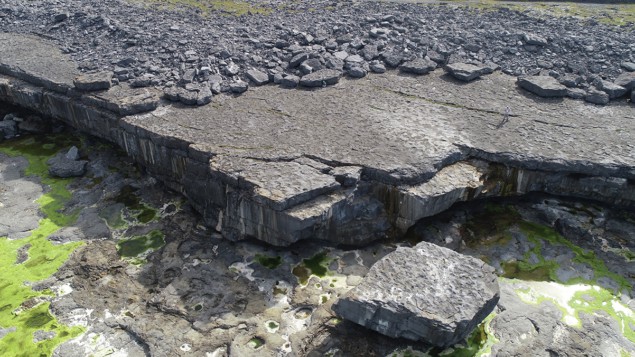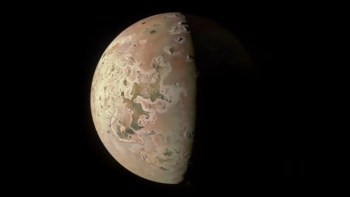
From Debussy’s “La Mer” to the Beach Boys’ “Surfin’ USA”, the ocean has always been a vast font of musical inspiration. Now a new project will create music informed by the science of storm waves and the dramatic impacts they have on coasts.
A collaboration between the geoscientist Ronadh Cox and the musicians Cormac Byrne and Rónán Ó Snodaigh, “Drumming the Waves” is an outreach element of “Boulder Beaches: The Understudied Archive on High-Energy Coasts” – a project funded by the US National Science Foundation.
“I thought it would be nice to do a music project that uses rhythm and percussion to express the physics of waves to create a sense of periodicity, regularity and also chaos, disorder and suddenness,” says Cox, who is a based at Williams College in Massachusetts, US.
Focused on 22 sites in Ireland, the project seeks to understand how rocky beaches are shaped by factors such as wave energy, geology and coastal geometry.
Much of Cox’s fieldwork took place on the Aran Islands in the mouth of Galway Bay. Following the 2013/14 winter storms that battered the eastern side of the Atlantic, Cox and her team documented the movement of many large boulders, including one weighing 620 tonnes. As big as a small house, it was easily the largest boulder to have been unequivocally moved by storm waves.
It had been assumed these rocks were relics from ancient tsunamis. But recent research suggests they could be the result of “rogue waves” at least twice the height of the background waves, and “sneaker waves” that have an unexpectedly long run up on a shallow slope.

As well as conveying the beauty of these events, the musical collaboration will also communicate their risks. “People are drawn to extreme environments in the Instagram era where people share information about where storms and big waves are happening. There is a lack of understanding of wave dynamics and the dangers they pose,” says Cox.
Both Byrne and Ó Snodaigh are specialists in the bodhrán, a traditional Irish drum. Songs will combine a range of percussion instruments with piano and synthesisers. “I’m not simply trying to map the data onto music. It’s an artistic process, we want to capture the visceral feeling of what it’s like to experience these coasts,” says Byrne who is a musician, composer and researcher at the University of Limerick.
Initially, the project is focused on studio music but once Covid restrictions ease it will probably include a live component too. The collaborators plan to create teaching packs that combine music with information about coastal erosion and climate change. Another idea is to design musical informational displays on clifftops.
• Find out more about Drumming the Waves in the Physics World Weekly podcast, where you can hear an early recording from the project as well as Byrne demonstrating how a bodhrán can be played to recreate the rhythms and textures of the sea.



